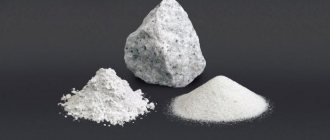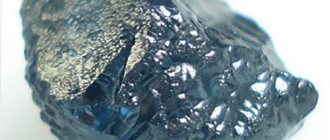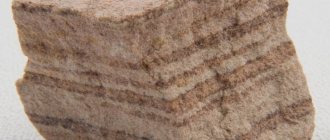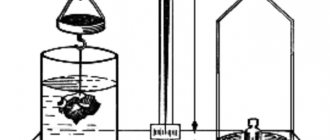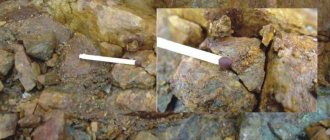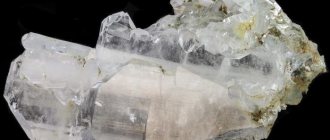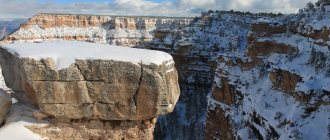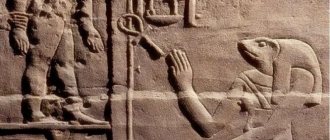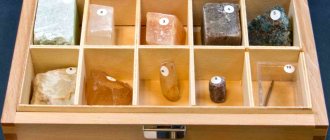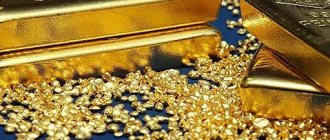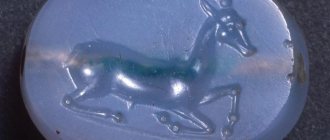The primary homogeneous substance from which the earth’s crust is composed is a mineral in a solid state of aggregation. In various combinations, it forms stones - rocks: an example of an igneous type is granite, which is formed in the bowels of the earth from melted magma. The properties of various mineral agglomerates depend on the conditions of lava solidification - a product of volcanic activity. Many of them are minerals.
How are they formed
Igneous rocks are materials formed from lava or magma during a volcanic eruption. The process took place at different depths, at different temperatures and pressures.
This is due to the division by origin.
Intrusive
They are formed at a depth of no higher than 3 km during slow cooling of the melt.
There are simple and complex intrusions:
- Simple ones are formed during one stage of magma intrusion; usually these are monomineral rocks.
- Complex ones require several phases to form. May consist of several minerals.
There are igneous rocks formed as sedimentary rocks. These are layered intrusions, the result of the precipitation of minerals from a melt.
Effusive
They are formed during the outpouring of lava in the form of a flow, “tablecloth”, vent, dome, and other formations.
According to the relief, the occurrences are positive - distributed over the surface or higher and negative - they form depressions (craters, calderas, wells).
Hypabyssal
A type of intrusive with shallower depth. Identified by different grain sizes.
Igneous rocks are called primary.
About sciences
The origin and physical properties of rocks are studied by two sciences related to each other - petrography and petrology, from the Greek word "petros" - stone. The history of the development of these sciences is conventionally divided into two stages - before the invention of the microscope and after that.
Discoveries made by volcanologists continue to this day. For example, komatiite, ongonite and boninite were discovered and studied in detail only recently.
Classification
In addition to division by method of formation, there are classifications based on other criteria.
By structure
Structurally, igneous rock is differentiated by the degree of crystallinity:
- Full crystalline. Crystallized grains with zero volcanic glass content.
- Partially crystalline. Crystal grains plus volcanic glass.
- Glassy. Pure volcanic glass.
That is, the difference is determined by the ratio of grains and glass in the igneous rock.
By grain size
Several classifications have been created based on the characteristics of grains.
Based on the relative dimensions of the grains, two types of structure are distinguished:
- Clearly crystalline. The grains are visible to the eye.
- Cryptocrystalline. Graininess is detected under a magnifying glass or microscope.
By absolute crystal size (mm):
- Fine-grained rock – 0.5-2.
- Medium grain – 2-5;
- Coarse grain – 5+.
Agglomerates with grains of the same or different sizes are also distinguished.
By texture
There are two types of magmatic texture.
Heterogeneous depends on the formation conditions:
- With voids from gases.
- The voids are filled with other minerals.
- Spotted agglomerates with different composition and structure.
- The components are arranged like a thread.
In any segment of igneous rock of uniform texture, the composition and structure are identical. This arrangement is a sign of the stability of the conditions in which it was formed.
Mineral-chemical composition
Like other classes of rocks, igneous rocks are classified into rock-forming (main) and accessory minerals.
Rock-forming materials are represented by (aluminum) silicates, magnesium and iron:
- The dominance of aluminum and silicon is created by light specimens: feldspars, quartz, mica of light shades.
- Igneous stones saturated with magnesium and iron are dark: amphiboles, pyroxenes, olivines, dark micas.
The share of accessory minerals is symbolic, up to 5% of the rock volume. However, they affect the description (texture, colors, shades).
The most common magmatic accessories are apatite, ilmenite, pyrite, rutile, chromite, zircon.
Zircon
The typical structure of magmatites is the predominance of oxides of silicon, aluminum, iron, magnesium, calcium, potassium, and sodium.
The main role is played by silica: its concentration determines the acidity of the igneous rock.
“Felsic rock” refers to silica-rich igneous rocks. The “basic rock” is poor in silica, but rich in oxides of calcium, magnesium, and iron.
Place of Birth
Deposits of igneous rocks have been explored everywhere.
Especially in Russia and adjacent territories:
- The north of the European part of Russia, the Urals, and Altai are rich in granites and gabbro.
- Porphyrites and diabases are mined in Altai, the Caucasus, the Urals, and Central Asia.
- Andesite mining has been established in Ukraine, the Caucasus, and Siberia.
- Armenia has the largest deposits of volcanic glass.
The volumes of extraction of magmatic raw materials are estimated in tons.
Typical representatives
The nomenclature of rocks of igneous origin includes dozens of items. Let's look at the most used ones.
Intrusive rocks
The main properties of rocks of this group: high hardness, density, thermal conductivity, frost resistance, low water permeability.
The most popular deep-seated igneous rocks are:
- Granites . Massive stones with a granular structure. They consist of feldspar or plagioclase, quartz and accessories (hornblende, biotite). All together creates grayish or “meaty” shades. Fire resistant up to 900°C.
- Gabbro . Dense full-crystalline agglomerates of gray, dark gray, dark green color. Due to their viscosity they are difficult to process.
- Syenites. Massive stones of a homogeneous medium-grained structure. More than half of the composition is orthoclase. A quarter comes from hornblende and biotite. They create light gray, pinkish or greenish shades.
- Diorites . Three-quarters of the composition is plagioclase, the rest is hornblende, augite, and biotite. The colors are dark gray or dark green to black.
- Pyroxenites . Dense, hard coarse- or medium-grained stone. The composition is almost pure hypersthene plus ore components that increase density.
Peridotites are similar in properties to pyroxenite. But it is almost entirely olivine.
Mineral olivine
Extrusive rocks
They copy the deep ones in composition, but differ in their glassy or partially crystalline structure and light, often porous texture. These characteristics make the igneous material vulnerable to weathering and mechanical stress.
However there are exceptions:
- Basalts are black, dense solidified lava. Grains with a glassy substance seeping between them.
- Quartz porphyries are easily distinguished by inclusions of quartz or feldspar in the fine-grained or glassy strata of reddish-brown hues.
Classification of feldspars - Liparites are lighter and more porous. Endowed with white, light gray shades.
- Porphyrites are porous igneous material interspersed with plagioclase or hornblende. The pores are filled with secondary silicates, which is why the stone looks grayish or greenish.
- Andesites are denser, fine-grained stones of gray, ocher-gray or brownish shades interspersed with augite, hornblende, and andesine.
- Diabases are saturated with magnesium-iron silicates, giving green and grayish-green shades. The gaps between labradorite crystals are filled with small grains of augite.
Volcanic glass stands apart: dark obsidian, light pumice, perlite.
Volcanogenic rocks
This group includes several volcanic formations:
- Ashes. Fine powder of volcanic glass, quartz, and other minerals. It was thrown out during the eruption, after which it settled in the surrounding area.
The dimensions of volcanic ash particles are 0.11-1.95 mm, with two thirds of them smaller than 0.16 mm.
- Sands. Loose masses of particles up to 4.9 mm.
- Tuffs. The result of compaction of ash, silica, clay.
- Tuff lavas form when melt foams due to a sudden decrease in pressure. Volcanic materials are mixed into it.
Endowed with porosity and glassy structure.
Physical characteristics of marble
The physical properties of marble depend on what impurities it contains more - in other words, what this or that type consists of. It comes in coarse, medium and fine grain types.
The main properties of the stone look like this (average values are presented):
- density from 1900 to 2900 kg/m³;
- porosity - maximum 1%;
- Mohs hardness level
- water absorption — 0,15-0,6%;
- fracture resistance indicator - 10-3 MPa;
- compression - from 100 to 250 mPa;
- specific gravity 2.7 g/cm³.
If marble has properties such as a serrated bond between grains combined with a fine-crystalline grain structure, its strength characteristic will be much higher. This stone polishes very well, acquiring an expressive shine. If you influence it by applying hydrochloric acid in a dilute state, it will boil violently - such is the nature of this stone.
Natural marble is very similar to jasper or quartzite; it does not leave any scratches on glass and always looks great. Especially if it is processed by people who know everything about marble and are in awe of this delightful natural material.
Where are they used?
Igneous rocks are widely used:
- Granites are an elite building material.
Areas of application of granite - Diorite is used as a vibration damper (for example, in bridges).
- Peridotites and pyroxenites are in demand for hydraulic structures, interior design, and the manufacture of decorative items.
- A variety of gabbro labradorite is a decorative and facing material sold at a high price.
- Diabases become road surfaces.
- Basalts are acid-resistant, electrical insulator, source material for cast decor, pipes, and chemical instruments.
- Pumice is used as a filler for light grades of concrete and an additive to cement.
Using pumice stones for feet - Light varieties of andesites turn into the walls of buildings, dense ones are suitable for the manufacture of acid-resistant products.
Diorites, granites, and peridotites also serve decorative purposes.
Table “Classification of minerals and rocks”
| Igneous | Sedimentary | Metamorphic |
| Granite | Clastic: sand, clay, crushed stone | Marble |
| Basalt | Organic: peat, oil, chalk, limestone | Quartzite |
| Pumice | Chemical: table and potassium salt, apatite, sulfur | Gneiss |
